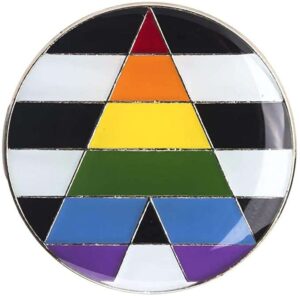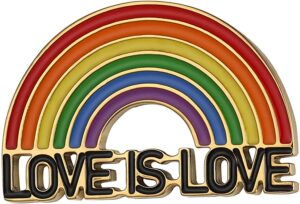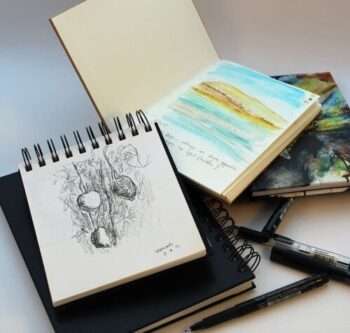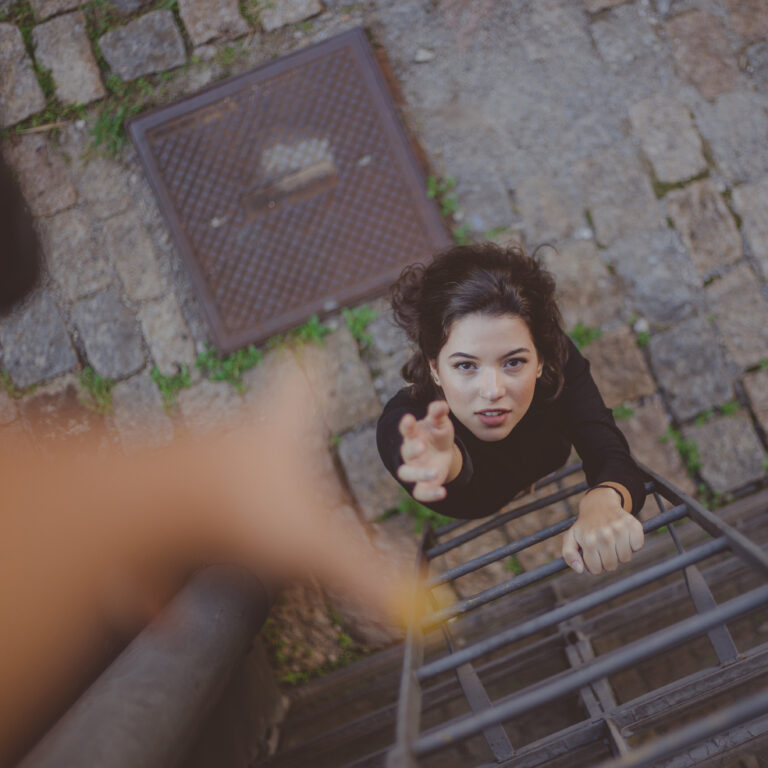June is Pride month. Did you know that a recent survey showed almost 14 percent of middle and high school students identified as having a sexual orientation other than straight and about 3 percent identified as someone whose gender identity did not correspond with their birth sex? We’ve come a long way from my days in high school, in the 80s, when anyone who felt different stayed in the closet. As an art teacher, the art room is often a place students who feel different, in any aspect of life, feel that can be safe. As a parent of an LGBT+ young adult and with other LGBT+ family members I write this post hoping that the world is becoming more aware and accepting of others in all their diversity.
I did a long-term teaching job a few years ago at a middle school in Massachusetts that did a great job creating an accepting climate. They celebrated Pride month in their daily announcements and students participated in Day of Silence. The world is changing and you can play your part. Here are ways you can support LGBT+ students in your art room.
1. Post safe space signs
You can find signs here. And/or wear your support with a pin, like this one, or this one. You can also download Safe Space materials here in the document section on the left side of the webpage. Put a show of support on your laptop or desk with a decal. Or wear your support with your clothing choice.
2. Don’t tolerate homophobic language or bullying
Research has shown LGBTQ youth face bullying at significantly higher rates than their peers. Stand up for your LGBTQ colleagues and students. Model support for their being treated with respect and acceptance. Unfortunately, many of us are aware of how some students describe a person or an assignment as “gay.” Or call a classmate a “faggot.” Make it clear that you do not tolerate that type of language. Stay tuned to classroom dynamics as bullying often happens in subtle ways.
3. Integrate LGBTQ artists into the curriculum
The Human Rights Campaign suggests that teachers integrate LGBTQ people and topics into the classroom. Artists that you might weave into your curriculum and lessons include Keith Herring, Kara Walker, Kehinde Wiley, David Hockney, Jasper Johns, Annie Leibovitz, Robert Rauschenberg, Andy Warhol, Grant Wood, Frida Kahlo (bisexual for those of you aware of her marriage to Diego Rivera), Jean-Michel Basquiat (bisexual), Leonardo da Vinci, Francis Bacon, Cy Twombly, and Jasper Johns. As with any artist, pick works that are appropriate for the classroom and your students’ ages and maturity.
4. Pursue professional development
Be committed to learning more about supporting gender and sexual identities. Visit Learning for Justice for opportunities. Increase your awareness, especially in regards to gender-role stereotypes, and gender-expression stereotypes.
5. Support LGBTQ student clubs
Support clubs such as GSAs (Gay Straight Alliances) or consider being an advisor for a GSA. More on GSAs here.
6. Use more inclusive language in the classroom
For example, you can call your students “students” or “class” instead of “boys and girls.”
7. Be aware of how self-portraits may be uncomfortable for some students
I was teaching a dual enrollment class for a community college that partnered with an area high school (dual enrollment programs exist to provide opportunities for high school students to take college-level courses for free or at a discounted price and earn credit toward high school completion and their future college degrees). A self-portrait assignment was part of the curriculum and I had a student contact me about their discomfort working with their own body and likeness because they identified as transgender. This was not the first time a student expressed distress at doing a self-portrait although it was the first time a student shared that reason and of course I made modifications.
8. Advocate
Advocate for your school to adopt and enforce a nondiscrimination policy that includes sexual orientation and gender identity if they do not have one already.
9. LGBT History Month
Create displays and/or lesson plans about LGBT History Month (October) or Pride Month (June). Here is one teacher’s bulletin board, more info here. Plus our Pinterest collection of ideas for PRIDE month.
10. Don’t shop at Hobby Lobby
While it’s difficult to always shop with an eye on who supports/doesn’t support personal causes I have to say Hobby Lobby has been so egregious I do recommend spending your money elsewhere. They have violated Illinois anti-discrimination laws, filed a lawsuit against the US government for the right to deny contraceptives to employees, and has been found with looted artifacts from foreign countries. So, I recommend steering clear of this company.
11. Show interest in your students
Teaching is very much about building relationships. When students are working on projects, art class allows for more conversations than many other subjects. Use that time to find out about your students’ interests. It sends a message that you care about them.
12. Be a safe haven.
I have had many a student eat lunch in my classroom (often with friends) and welcome students into my classroom from study halls. As long as students don’t interfere with a class and are otherwise productive, allowing students to be in the art room can be a kindness to offer.
13. Sketchbooks and projects
Be aware if you utilize sketchbooks as part of the curriculum, it is important to keep an eye on what is going on in those sketchbooks. Sketchbooks can be therapeutic for teens but keep an eye out for students who are struggling and don’t hesitate to ask students about things you see that might give concern. Also, include counselors in the conversation if necessary. You can use projects that encourage the exploration of identity to provide students with outlets and opportunities to reflect on their identity. One of the major tasks of identity is for a teen to figure out who they are and who they want to be.








